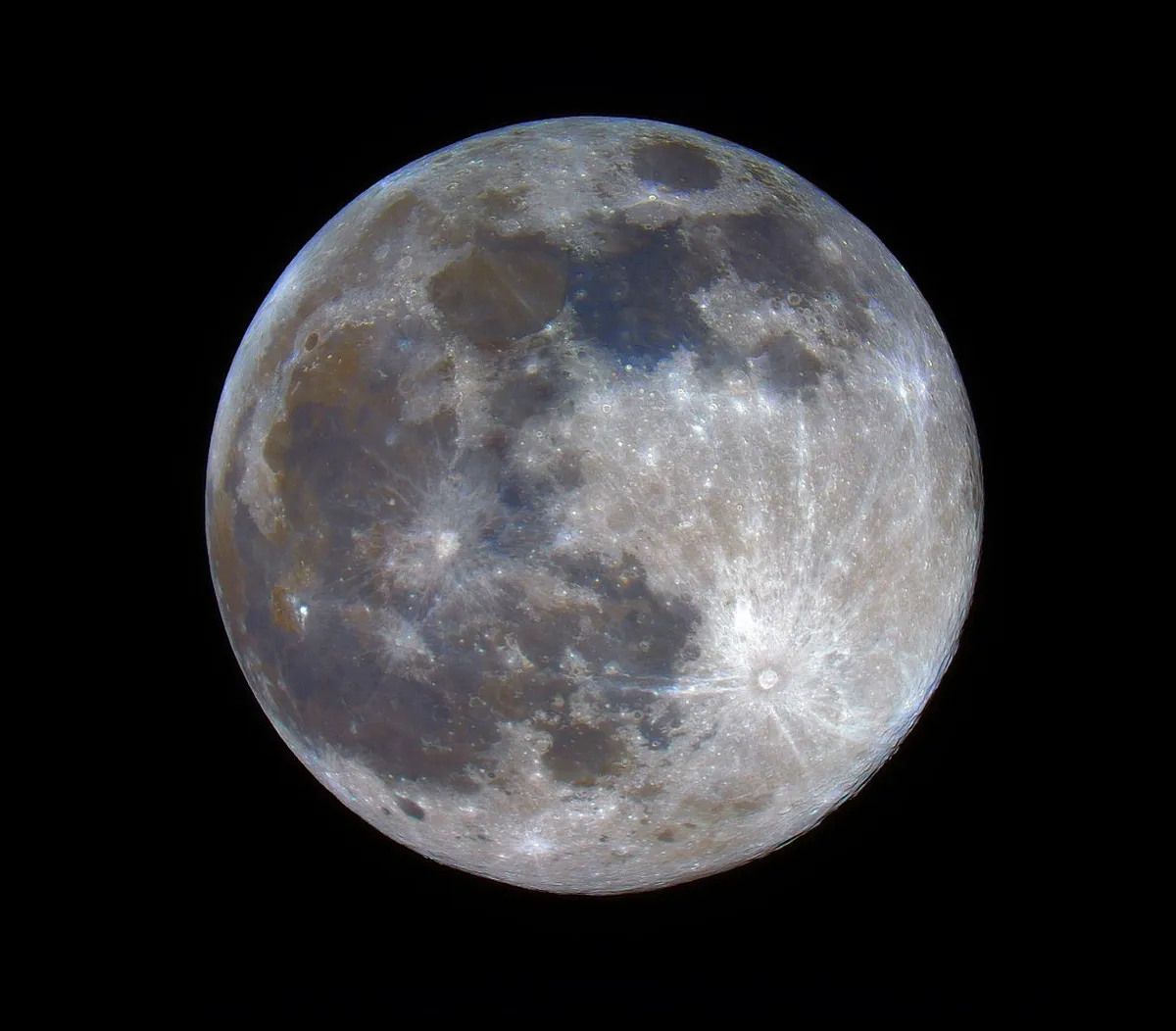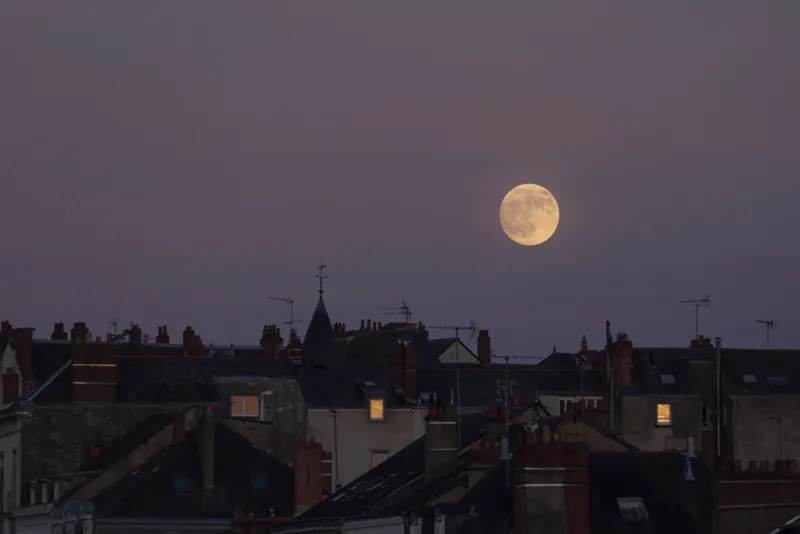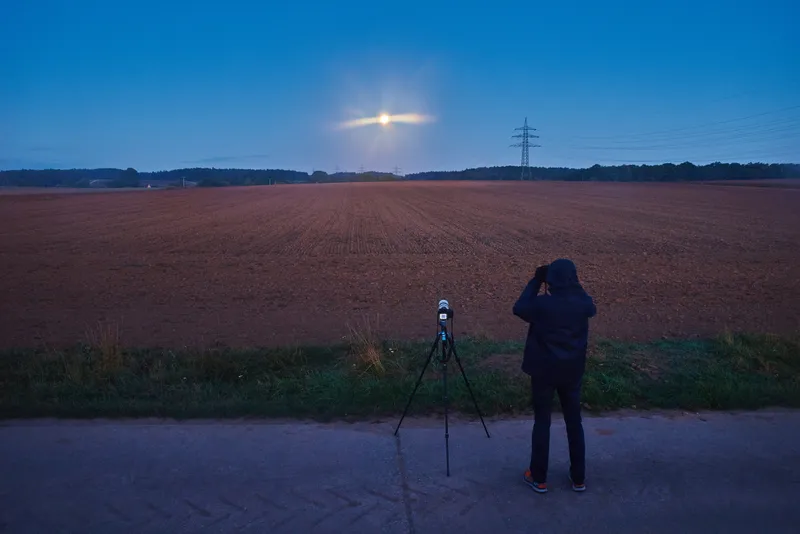The first full Moon of 2024 rises tonight, 25 January at around 4pm UTC and is known as the 'Wolf Moon'.
The light from a full Moon really is spectacular, and on a clear night it illuminates your surroundings, acting as a shining beacon in the night sky.
As a result, many astronomers avoid observing the night sky during the full Moon, as it hampers observations of deep-sky objects like galaxies.
It also washes out the stars in the night sky, making them much harder to see.
But there is still much to see and enjoy if you're stepping outside this evening to enjoy the Wolf Moon.
Sign up to receive the BBC Sky at Night Magazine e-newsletter and get lunar times and phases delivered to your email inbox every week. Download and print out our lunar phases 2024 poster for phases and timings throughout the year.

Because the same side of the Moon always faces Earth, Moon-observers are able to watch as the terminator - the line between the lit and unlit portions of the Moon - moves across the lunar surface throughout the month, highlighting different features and creating clair-obscur effects.
During a full Moon, however, the Earth-facing side of the Moon is washed out, making it difficult to see specific features.
Yet despite this, a full Moon is one of the most spectacular sights in nature, particularly for stargazing beginners and young children, and we normally only get 12 of them in a year.
Here are some of the things you can see when observing tonight's full Moon, or Wolf Moon.
Why it's called a Wolf Moon

The Wolf Moon is thought to be an old name describing the second full Moon of winter, and is probably so-called to mark the howling of wolves during winter months.
Unlike other animals that hibernate, wolves do not, and are active during winter.
The Wolf Moon isn't the only full Moon to be given a name; each month's full Moon has numerous names attached to it, for example February's 'Snow Moon' and June's 'Strawberry Moon'.
These names should be taken with a pinch of salt when observing the Moon, however, as they don't actually indicate any sort of change in the Moon's appearance or behaviour!
Observing tonight's full Moon

From the UK, the 25 January 2024 full Moon, or Wolf Moon, will rise in the eastern sky at around 4pm UTC, depending on your exact location.
It will be located in the constellation Cancer and will sit just below Castor and Pollux, the twin stars of Gemini.
At full Moon, the lunar landscape on the Earth-facing side of the lunar globe is lit from directly above.
As we've said, this precludes a lot of amateur astronomy activity, but there is still much you can see.
For more advice, read our guide on what to see during a full Moon.
Watch it rise, see the Moon illusion

Observing the full Moon low on the horizon can be a beautiful sight, and you may notice an optical effect known as the Moon illusion, when the Moon appears much larger than normal.
You can break this illusion, however, by holding your arm out at full length and using your thumb to cover up the whole disc of the Moon, which it should comfortably do.
No-one knows exactly why the Moon illusion occurs, but it could be because the Moon appears to dwarf trees and buildings that, far in the distance, appear tiny.
As the Moon rises you may also be able to see the edge of the Moon ripple and wobble; an effect caused by the distorting effects of Earth's atmosphere.
Look for a lunar halo

Sometimes during a full Moon you might see a circular glow or halo around the Moon.
At full Moon and during the fuller gibbous Moon phases, bright moonlight streaming thorough the clouds can produce haloes and other atmospheric phenomena.
So if you're stepping outside tonight to look at the full Moon, look around the disc and see if you can observe any tricks of light.
See a Moonbow

Did you know that rainbows can form at night? They can, and they're known as Moonbows.
They can be tricky to see, though, as you need a full Moon and also moisture in the air, such as when it's been raining, which seems at odds with the crisp, clear winter's night required to see the Wolf Moon.
Moonbows are often seen in the mist that hovers above large waterfalls, so if you happen to have a particularly large one near you, you might just be able to see one tonight.
Observe, sketch and appreciate the lunar surface

Yes, many amateur astronomers will tell you that a full Moon is to be avoided at all costs, but there's still nothing to stop us stepping outside, looking up at the lunar disc and admiring its beauty.
Get out a pair of binoculars and have a look at the lunar surface. If you have a lunar chart or Moon map handy, can you spot some of its larger, more conspicuous features?
Can you spot the location of the Apollo landing sites on the Moon, for example, or identify some of the larger lunar maria or 'seas'?
If you're observing in a group, why not have a go at sketching what you see, then compare your sketchings when you head back inside to warm up? You can find out more about this in our guide on how to sketch the Moon.
And you could even have a go at photographing the Moon. Read our guide on how to photograph the Moon with a smartphone for more advice.
And if you do capture an image of tonight's Wolf Moon, don't forget to send us your images.
